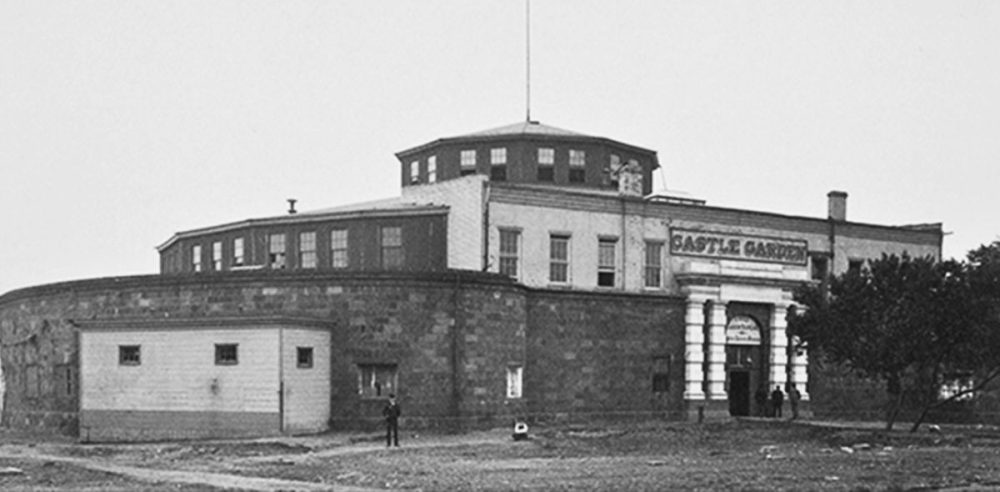CNN appears to have botched a recent correction of President Donald Trump on the hot-button issue of immigration.
A “fact check” article titled “Your complete guide to tariffs: How much you’ll pay, and when” made unfounded assertions about immigration to negate the President’s points on tariffs.
The article read, “And Trump has repeatedly (and incorrectly) said that ‘the tariff sheriff,’ former President William McKinley, ushered in an era of American prosperity at the end of the 19th century by going all-in on tariffs. Though the U.S. economy was growing strong in the 1890s, that was largely on the back of practically unrestricted immigration, among other factors.”
While the United States did experience a period of increased immigration in the latter part of the 1800s, it was not “unrestricted.”
“The Chinese Exclusion Act of 1882 and Alien Contract Labor laws of 1885 and 1887 prohibited certain laborers from immigrating to the United States. The general Immigration Act of 1882 levied a head tax of fifty cents on each immigrant and blocked (or excluded) the entry of idiots, lunatics, convicts, and persons likely to become a public charge,” the United States Customs and Immigration Service website states.
Notably, each of these laws reduced the inflow of unskilled labor, which was primarily flowing to the railroads and heavy industry at the time.
The State Department’s Office of Historian website indicates that the flows of Chinese and other labor that came into the U.S. before the 1880s suppressed working-class wages and decreased the working conditions of the extant laborers.
“Non-Chinese laborers often required much higher wages to support their wives and children in the United States, and also generally had a stronger political standing to bargain for higher wages. Therefore many of the non-Chinese workers in the United States came to resent the Chinese laborers, who might squeeze them out of their jobs,” an entry in the State Department’s Milestones blog reads.
The Alien Contract Labor Laws of 1885 forbade companies from bringing foreign labor into the country under contracts, and it changed the profile of the type of immigrant that could enter the country. The law made exceptions for “foreigners recruited to do domestic service, skilled workers needed to help establish a new trade or industry, professional artists, lecturers and actors,” a summary of the law provided by ImmigrationHistory.org says.
Aside from raising revenue from foreigners, the Immigration Act of 1882 forbade the type of immigrant that could be a burden to public services, a departure from the profiles of immigrants admitted entrance to the U.S. today. In 2022, 54% of households headed by immigrants (naturalized citizens, legal residents, and illegal immigrants) used one or more major welfare programs, a Center for Immigration Studies study revealed.
The news article does not attempt to explain why wages have largely been stagnant in the United States for decades when America has experienced sustained waves of both legal and illegal immigration since the mid-1960s.
Many Texans might recall when Former Congresswoman and Civil Rights Icon Barbara Jordan (D-TX) chaired the U.S. Commission on Immigration Reform in 1994.
During one speech she said, “The commission finds no national interest in continuing to import lesser skilled and unskilled workers to compete in the most vulnerable parts of our labor force. Many American workers do not have adequate job prospects. We should make their task easier to find employment, not harder.”
She recommended cutting immigration levels by around a third every year. Roughly thirty years later, her recommendations have not been implemented.
The 1880s were not the only decade where legislation was passed to throttle immigration.
There was another round of immigration restrictions in the 1890s. Congress passed the Immigration Act of 1891 which added further restrictions to contract labor and expanded the class of people that could be deported to include the insane, paupers, and those suffering from infectious diseases, among others.
The remainder of the article, while more even-handed, failed to explore places where tariffs placed on steel and washing machines had been successful during Trump’s first term in office. Despite specifically discussing steel and appliance tariffs multiple times in the story, CNN does not consider whether the tariffs achieved the goals the 45th President laid out when he imposed them against China.
Even organizations typically antagonistic to Trump, such as the leftist Brookings Institute, conceded the efficacy of the steel and appliance tariffs imposed by the President in the late 2010s. A commentary from Jeffrey Gertz, a former Brookings Expert, on Brookings’ website noted that Trump said he intended the tariffs to create American jobs.
“While it is difficult to pin down exact numbers, the tariffs on steel products appear to have helped create several thousand jobs in the steel industry; similarly, tariffs on washing machines are associated with approximately 1,800 new jobs at Whirlpool, Samsung, and LG factories in the U.S. In these specific industries, then, tariffs have probably been good for workers,” Gertz conceded.
The commentary later notes that these tariffs likely raised some consumer and labor prices, although this is hard to quantify in some places.
Misleading fact-checks on Trump appear to have become a feature of the corporate press in recent years.
During the 2024 presidential campaign, the ABC presidential debate moderator was widely panned for repeatedly “fact-checking” the then-candidate with erroneous information, including a claim that crime was going down in the United States.


